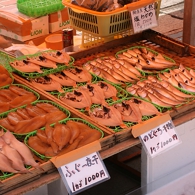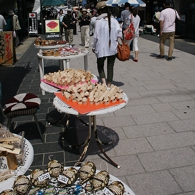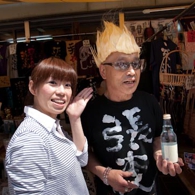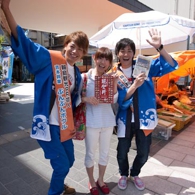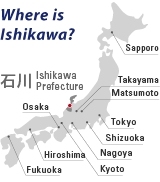
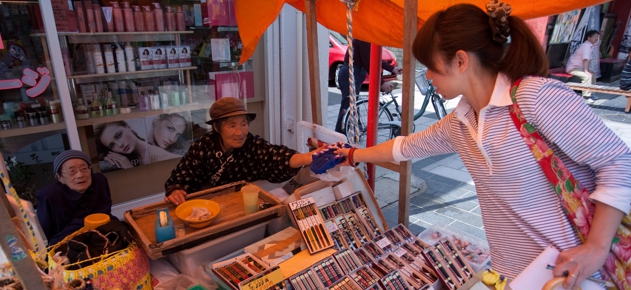




An agricultural and fishing city that is also well known for its lacquerware.
Wajima is located on the tip of the Noto Peninsula. It is nestled by mountains and looks out onto the Japan Sea. It is an agricultural and fishing city. Wajima is also well known for its lacquerware. Making Wajima lacquerware requires refined skills and time-consuming steps. The art of lacquerware has been mostly practiced by male craftsmen throughout history. Consequently, most women of Wajima are in charge of farming, fishing or other labor-intensive work. One of the more famous professions here in Wajima is 'women under the sea,' also known as female deep-sea diving. Without any oxygen tanks, these women deep-sea dive for conch and abalone. This unique profession has been passed down from generation to generation for centuries. With the men producing lacquerware and the women working outdoors, it was the women who would meet in the mornings to trade or barter goods to secure whatever they needed. This is how the original Wajima market came into being. This 1000-year-old tradition continues today, and the Wajima morning market is one of the most famous and oldest morning markets in Japan.
By Wawa / Published: June 25, 2012
Wajima Morning Market
Place: Asaichi-Dohri street, Wajima City, Noto Peninsula
Open: 8:00-12:00; Closed the 10th and 25th of every month, and the first three days of New Year
How to get to Wajima City: Hokutetsu Express Bus "Kanazawa-Wajima Line
Full of surprises and fun!

*
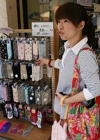
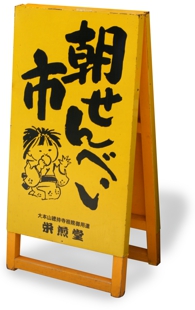
These savory salty crackers also go great with red wine.
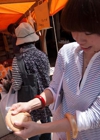
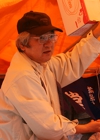
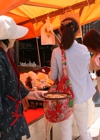
Don’t forget to take pictures with Wajima's “Super Saiyan”!

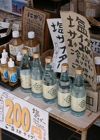

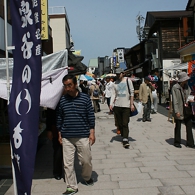
Instead of using the chopsticks, the sashimi here is served over on skewers.
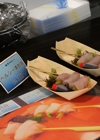
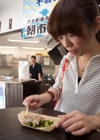
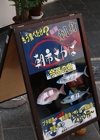
Antique shop with wonderful collections.
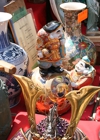
“Shugodo” has
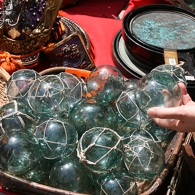
Earrings, necklaces and breast pins decorated with natural lacquer.
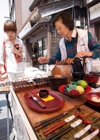
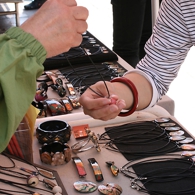
If you are worried about maintenance of wooden lacquer ware, how about "cloth" one?
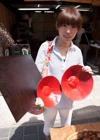
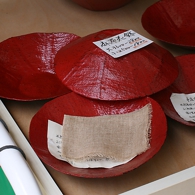
Try some samples before you buy those preserved seafood!
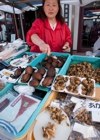
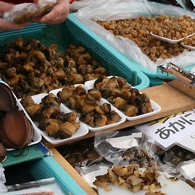
Here are some basic information about the salty scallops. If you eat up within a few days, just keep them at room temperature! Within 7 to 10 days, then put in a fridge! Or you can preserve them in a freezer for a few months.
[The average price]
*Rough prices per 100g
Akanishi clams: 1,000 yen
Wajima's steamed salty scallops: 8,400 yen
Australian steamed salty scallops: 6,300 yen
Full of great food and friendly people! This morning market is worth to visit!
Wajima morning market is full of great food and friendly people. When you visit the market, please try to talk to the local people. They might be shy at the beginning, but once they know you, they will be willing to offer you their help and warm hospitality. In addition, there are so many lovely small streets around the market. Try to explore and join our real life in Wajima city!
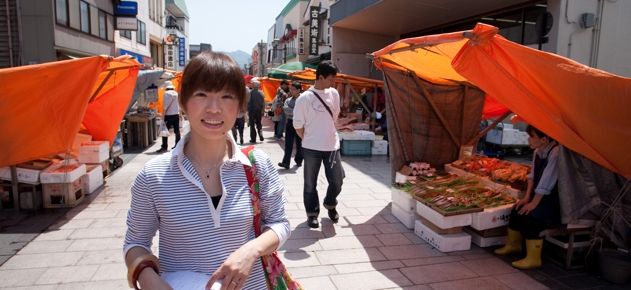
Wawa (Kao Chen-Lien), who is originally from Taiwan, lives in Wajima City with her family.
Kanazawa Area
Kenroku-En Garden
Seisonkaku Villa
Kanazawa-Jo Castle
Hishi-Yagura/<br>Gojikken-Nagaya/<br>Hashizume-Mon Tsuzuki-Yagura Museum
Chaya-Gai<br>Geisha Districts
Nagamachi Buke-Yashiki-Ato (Previous Samurai District)
21st Century Museum of<br> Contemporary Art, <br>Kanazawa
Nomura-Ke<br>Samurai House
Yuwaku Onsen-Kyo Spa Village
Kanazawa Yuwaku Edo-Mura Museum
Following Matsuo Bashô’s steps in Ishikawa - 1/6 [Introduction]
Following Matsuo Bashô’s steps in Ishikawa - 2/6 [Kanazawa]
Light-Up Bus
Noto Area
Rokkosaki Cape
Mitsukejima Island
Day Trip from Kanazawa #01-Wakura-Onsen Spa Town Nanao City
Day Trip from Kanazawa #01-Ipponsugi Dohri Street Nanao City
Noto-Jima Glass Art Museum
Wajima Asaichi Morning Market
Sohjiji Soin Temple
Kaga Area
Komatsu Experience
Shirayama Hime-Jinja Shrine
Daishoji District
Kaga-Hashidate District
Higashitani Mountainous Area
Following Matsuo Bashô’s steps in Ishikawa - 3/6 [Komatsu City]
Following Matsuo Bashô’s steps in Ishikawa - 4/6 [Natadera Temple]
Following Matsuo Bashô’s steps in Ishikawa - 5/6 [Yamanaka Onsen Town]
Following Matsuo Bashô’s steps in Ishikawa - 6/6 [Daishoji District]
Rosanjin in Yamashiro Onsen Town
Hakusanroku Gibier: Local cuisine utilized wild game from the mountain area
Noto no Shio: Salt extracted from the sea
Jizake: Local sake in Hokuriku region
Buri: Yellowtail
Kaga-ryori:<br>The Traditional Local Food
Kanou-gani & Kobako snow crabs
Kaga Yasai:<br>Traditional Vegetables
Tempura
Sushi
Komatsu Udon Noodle
Event
Enyukai: Geisha Party
Geisha Performance with Dinner
Sunday Zazen Session
Custom
Shintoism
Arts and Crafts
Yamanaka Shikki: <br>Lacquer Ware made in Yamanaka
Wajima Nuri<br>Lacquerware
Wagasa<br>(Traditional Umbrella)
Kaga Temari<br>(Traditional Handball)
Kaga-Yubinuki<br>(Traditional Thimble)
Kutani-Yaki<br>Porcelain
Aochibu Blue Dot(br)Kutani Artist - Kingyoku Nakata
Kaga Hachiman Okiagari<br> Paper Doll
Kaga Kebari<br>Feather Bait
Stroll Kanazawa in Rental Kimono - 1/2 [Renting kimono]
Stroll Kanazawa in Rental Kimono - 2/2 [Strolling in Kimono]
January
Dezomeshiki<br>Firefighters' Ceremony
Enyukai: Geisha Party
February
Setsubun-Sai Festival
Yukidaruma Matsuri<br>
Festival
April
Enyukai: Geisha Party
Sakura Viewing
May
Seihakusai Festival
Kutani Chawan Matsuri
(Outdoor Market)
Otabi Matsuri Festival
Okaeri Matsuri Festival
June
Hyakumangoku Matsuri<br>Festival
July
Enyukai: Geisha Party
Abarei Matsuri Festival
Yamashiro Daidengaku Dance Festival
August
Issaki Hoh-toh Matsuri Festival
Niwaka Matsuri Festival
November
Kanou-gani & Kobako snow crabs
Enyukai: Geisha Party
December
Enyukai: Geisha Party
All Year Round
Wajima Asaichi Morning Market
Sunday Zazen Session
Light-Up Bus
Shops
Stroll Kanazawa in Rental Kimono - 1/2 [Renting kimono]
Stroll Kanazawa in Rental Kimono - 2/2 [Strolling in Kimono]
Sunday Zazen-Session
Paragliding
Snowboarding
Pottery-Making
Kanazawa Smoking<br>Etiquette Guide
Special Interview<br>after the Tohoku Earthquake
Tourist Centers
About Ishikawa Prefecture
How to Get to Kanazawa
Access from Tokyo
Access from Osaka
Access from Nagoya
Access from Takayama
How to Get to the Noto Peninsula
About Us

